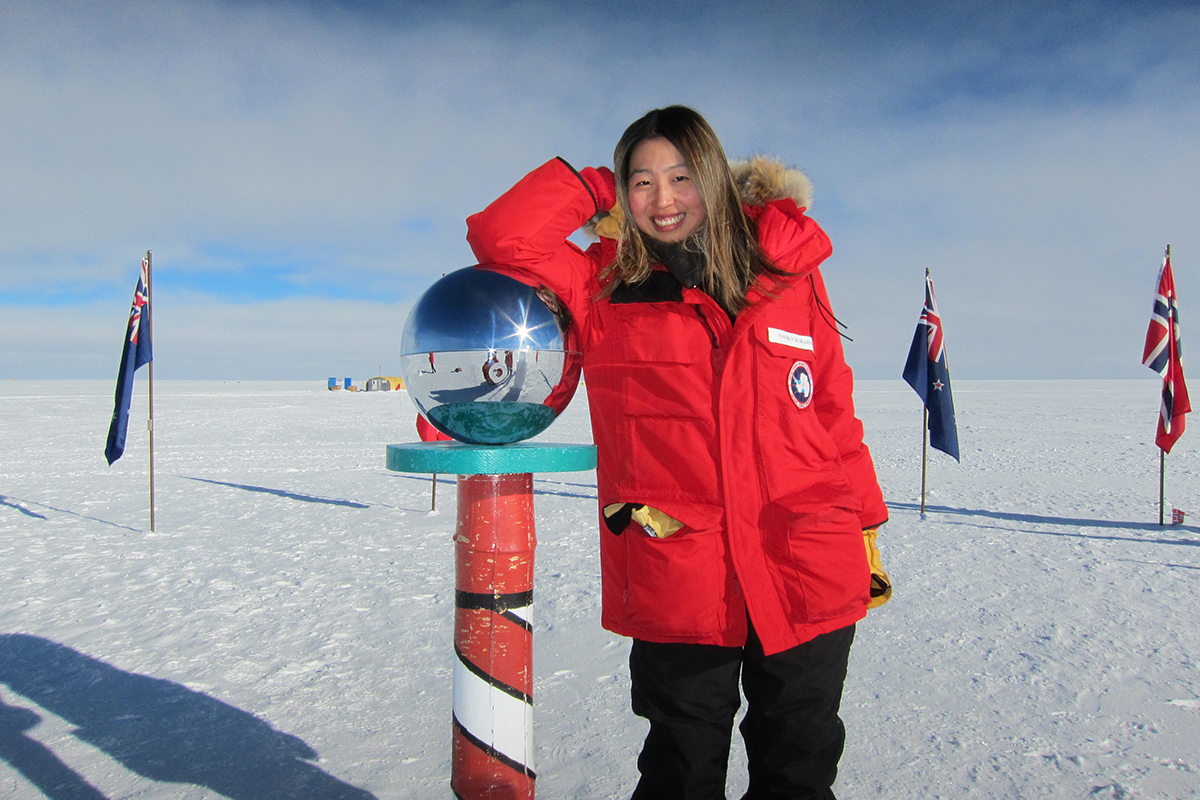NSF Career Award Supports Work that Could Redefine the Night Sky
By Gina Myers
 Associate Professor of Physics Naoko Kurahashi Neilson, PhD, stands at the geographic South Pole where she conducts research as part of the IceCube collaboration.
Associate Professor of Physics Naoko Kurahashi Neilson, PhD, stands at the geographic South Pole where she conducts research as part of the IceCube collaboration.
July 19, 2021
Particle astrophysicist Naoko Kurahashi Neilson, PhD, begins by explaining neutrinos. Also known as ghost particles, neutrinos are particles that have the ability to pass through surfaces. Telescopes use light to view the universe, but since light cannot pass through surfaces, there are limitations to what can be seen. Neutrinos could open up a whole new way to do astronomy.
“By using neutrinos to study the universe, we get a completely new field of astronomy that we couldn’t get by studying light. We expect to see a completely different universe using neutrinos,” she explains. “It’s almost like if you look outside at night when it’s dark, and you don’t see anything. Then you put night vision goggles on, and you can see things. We expect something like this to happen if we are successful.”
The associate professor of physics was awarded a National Science Foundation (NSF) Career Award to look for supermassive black holes in the sky using neutrinos. Neilson is conducting this work as part of the IceCube collaboration, which is a team of approximately 300 physicists from 53 institutions in 12 countries, working with data collected from the IceCube Neutrino Observatory, located at the geographic South Pole. The observatory is the first neutrino detector of its kind, designed to observe the cosmos from deep within the South Pole ice.
Certain categories of data from this detector were previously considered useless for this type of work, until Neilson showed in a 2015 NSF-supported study that they are viable. Now it is up to Neilson to actually do the work, and in doing so, prove that this is the most sensitive and best detector, providing the best analysis of the Southern sky.
Neilson’s project is also a great opportunity for undergraduate students, as the NSF award provides support for undergraduate research. “You have to be inspired by science to want to be a scientist,” says Neilson. “I think the research we do is very romantic in a way. You go to the South Pole and look at the most violent things in the universe, and you get to be part of an international team and contribute to something much bigger than you are.”
It’s this sense of curiosity and wonder that drives Neilson’s own work and that of her IceCube collaborators. “We have to do things because we are curious. We have to romanticize about the world and the universe, wonder out loud, get together, try to understand it for the sake of understanding it. Eventually that curiosity becomes civilization, technology and development, many decades and centuries down the line—but that’s not why we do it. We do it because we are fascinated by it.”
Learn more about the Drexel IceCube Group.